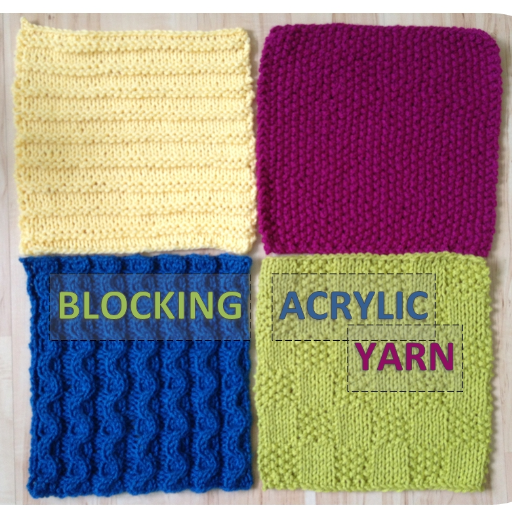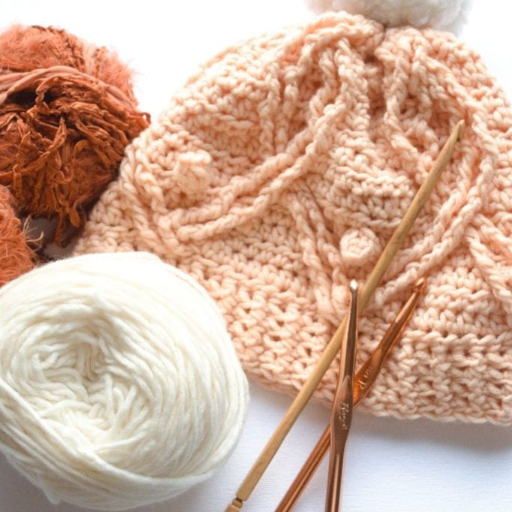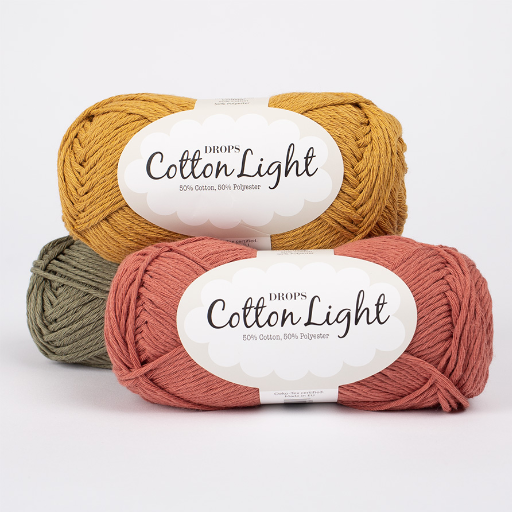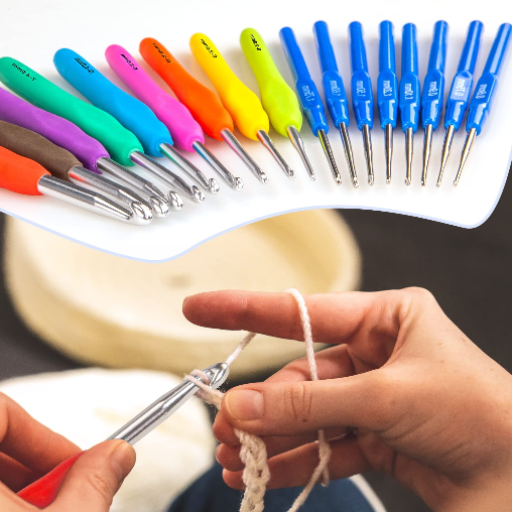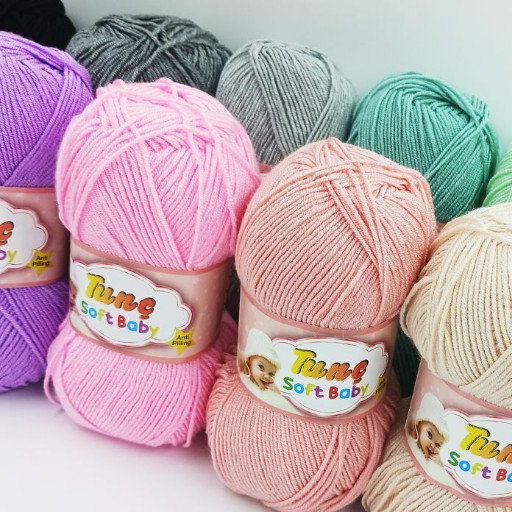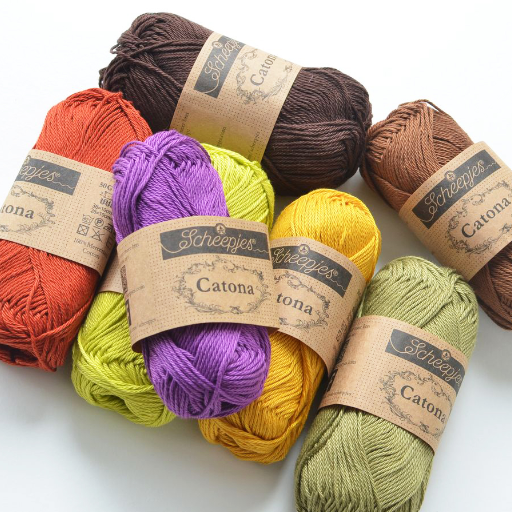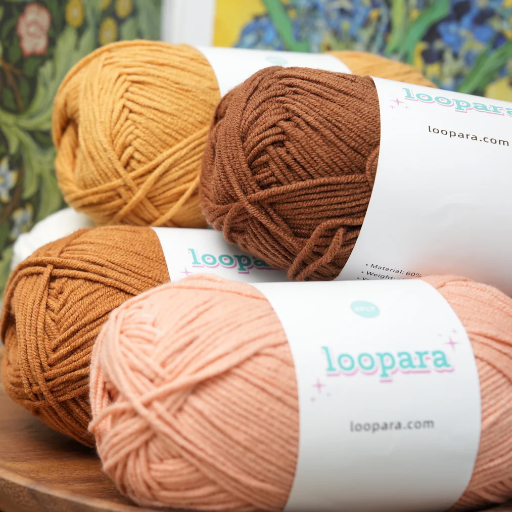Crafting and fashioning items using yarn comes with a host of material choices and yarn made from acrylic is one of the most popular. However, if its use in clothing is debatable, there are many who still regard it as useful because it is inexpensive and comes in different varieties and colors giving acrylic yarn an edge with many designers and knitters. This article will discuss the merits and demerits of acrylic yarn so that, as the user, you will know what to expect from any given piece of garment. If you care about the environment and want to make a difference regardless of whether you are a veteran in crafting or just someone who wishes to learn, this article will make smart choices on when and where to use acrylic yarn.
What are the Benefits of Using Acrylic Yarn?
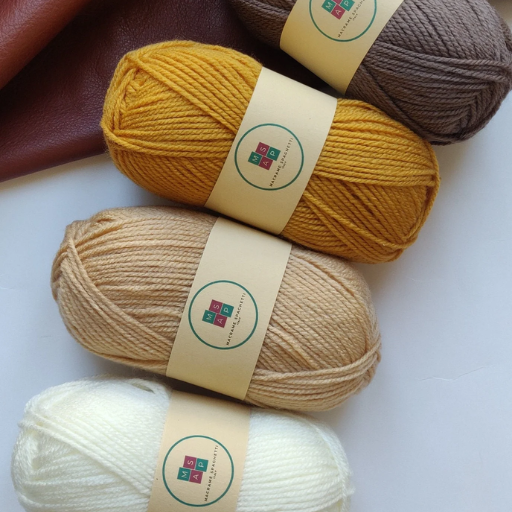
A variety of crafting and fashion projects acrylic yarn is popular for, can be linked to the following benefits:
- Affordability: Lower production costs allows manufactures to sell it at a cheaper price than its counterparts such as wool ensembles or cotton which in turn expands its customer base when compared to rotary knit machines.
- Durability: Synthetic yarn is far more elastic than natural yarn. It can endure heavy physical strain and retain its shape alongside static and dynamic pressures.
- Variety: Acrylic yarn is available in many different shades and textures. This creates opportunities for designs that can be versatile.
- Ease of Maintenance: Acrylic yarn is low maintenance because it is not harmful to the hands and can be washed using machines.
- Hypoallergenic Properties: Acrylic yarn can be used by people who show hypersensitivity to woolen materials as it can be freely used with these fabrics without creating any allergic reactions.
All these aspects combined bring great value to both artisans and hobbyists, proving that acrylic yarn does off great advantages.
Why is Acrylic Yarn Easy to Work With?
How Does Acrylic Compare to Wool?
- Durability and Maintenance
Acrylic yarn is well known to be more friendly and less of a hassle to maintain than wool. Unlike wool that requires some sort of gentle hand cleaning, air drying and is prone to felting or shrinking, acrylic yarn can be put in the machine for a wash. This is great for items that need frequent washing such as clothing and blankets. Also, unlike wool, acrylic does not wear easily, meaning they do not get damaged easily which means looking good and strong for longer even if used regularly.
- Warmth and Breathability
When it come to staying warm, wool is the outright winner because of how well they retain heat whilst also breathing well. Wool pulls air pockets and works as good insulation for cold places, making it great for winter clothing. Acrylic yarn can be warm, but lacks breathability, making it lesser in controlling body temperature as a wool. Some acrylic yarns can now be manufactured to work like wool which blurs the difference for many uses.
- Cost and Ethical Considerations
Because it is made of synthetic materials, acrylic yarns don’t have any ethical problems connected to animal cruelty like wool does. This makes the yarn more accessible to people who are on a budget or working on large scale projects. Wrapping up, those who follow a cruelty-free or vegan lifestyle would see acrylic yarn as a suitable replacement for wools. On the other hand, the wool does have a biodegradable appeal which could attract eco-conscious individuals, although it comes at a much higher cost.
- Texture and Appearance
Wool garments and accessories are adored for their luxurious, soft touch alongside the slightly rough texture, acrylic is the exact opposite. Depending on the make, their texture can vary greatly which adds a unique quirk to the product. These days, there are some companies who manufacture faux fur wools that are of high quality and super soft to touch which look and feel like wool. Also, the feel of wools fibers is soft and has a glisten while their synthetic counterparts feel shiny and have a uniformed luster, with exceptions when they try to imitate wool.
What Makes Acrylic Yarn a Good Choice for Beginners?
A beginner would find working with acrylic yarn to be one of the easiest options, given its low cost along with its easy maintenance. The low cost acrylic yarn offers makes it easier for new crafters or knitters to buy without the risk of losing money. The wide range of color available enables them to choose from different options and even use the yarn for other projects.
The easiest feature about acrylic yarn is its machine washability along with its long lasting nature. Anyone who embroiders garments or home decor items which will be used on a frequent basis will find the maintenance, post project maintenance to become a breeze. Thanks to the synthetic makeup of acrylic, it becomes resistant to wear, which gives new fiber artists reliable results. The soft makeup of acrylic yarn is what makes it even easier for new users, due to less snagging, which makes it easier to perform basic techniques like casting on or knitting and crocheting. All of these properties make a Michael yarn an ideal match for new users to fiber arts.
What are the Cons of Acrylic Yarn?
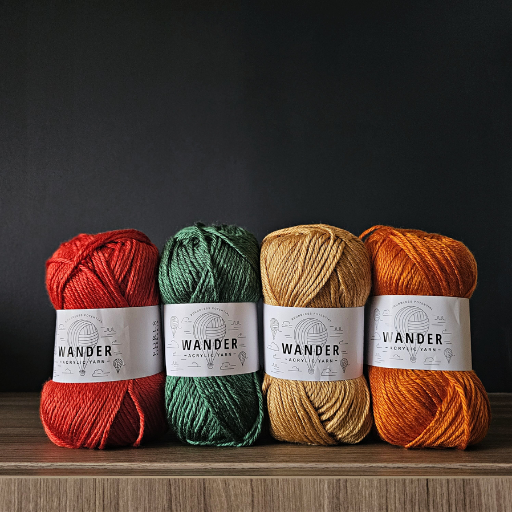
While versatile and inexpensive, acrylic yarn has glaring disadvantages. To start, it is a synthetic product and as such does not breathe or wick moisture like natural fibers, making it uncomfortable for clothing for warmer weather. In addition, it is less heat resistant than other materials because acrylic can melt or warp at a high temperature. This renders the material useless for pot holders or anywhere near an ironing station. Acrylic fibers also do not decompose, which is another issue that is more important than natural fibers. These factors help determine whether acrylic yarn is appropriate for a certain project or not.
Is Acrylic Yarn Scratchy or Comfortable?
The quality of production and the subsequent processing of a yarn affect the texture of acrylic yarn. Typically, warm soft and smooth yarns tend to be higher-grade, making fabricating clothing, blankets, and other textile goods meant to be worn or used directly on the body practical. In some cases, these yarns undergo treatment or blending with other fibers designed to improve comfort. Alternatively, cheaper acrylic yarns raised from substandard processes may feel rough and scratchy, especially if the yarn is poorly processed or constructed using lower-grade manufacturing techniques. Moreover, it is important to note that the generic softness of acrylic yarn post washing may lead to a falsely comforting perception, as the structure of the yarn will often puffer or blunt over time in a cyclical washing routine, and roughen with frequent use or machine washing. Those with sensitive skin would need to be cautious to ensure using comfort yarns specifically engineered to soothe and pamper the skin.
How Does Acrylic Yarn Hold Up Over Time?
Acrylic yarn is known for its strength which allows it to stand the test of time for normal use. Its synthetic fibers combats issues associated with fading and weakening due to sunlight, so it is ideal for outdoor projects or places with ample lighting. However, pilling, which is the accumulation of small fiber balls on the surface due to constant handling and repetition, is a common occurrence. This is prevalent in cheaply made or loosely spun acrylic yarns. Furthermore, abrasion inside washing machines, depending on the washing technique and detergent used, can cause the yarn to lose some softness with abrasions over time. Experts suggest handwashing or putting them on a gentle setting in the machine with warm water and mild detergent to avoid such damage. Taking the time to extend the care of these projects will result in the yarn maintaining its functionality and look for years.
Are There Any Allergies Associated with Acrylic Yarn?
Acrylic yarn is known to be hypoallergenic for most people because it is man-made. However, some people may have an adverse reaction when they wear acrylic products/familiar with them. This is usually not an allergy, but likely has to do with other factors like leftover chemicals left from production. These chemicals could include the dyes or finishing agents. Along with these, lax washing also may lead to skin irritation for some more sensitive people. Acrylic yarn clothing should be cleaned using gentle detergents to remove any left over chemicals to prevent any complications. Highly sensitive individuals may want to test out the yarn on a small patch of skin before wearing it for extended periods of time.
How to Care for Garments Made from Acrylic Yarn?
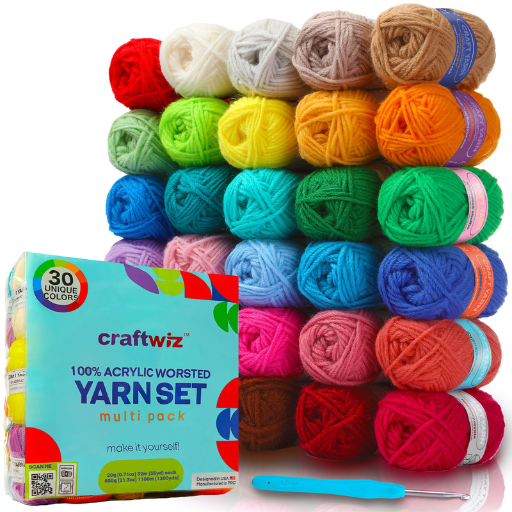
Your acrylic garments can be maintained effectively by:
- Washing: Hand wash or machine wash on a gentle cycle using lukewarm water and a mild detergent. Avoid using harsh chemicals or bleach, as these can damage the fibers.
- Drying: Never place the garment in a dryer. Place the piece flat on a clean towel to air dry instead. A high temperature can cause the acrylic fibers to melt or loose it’s shape.
- Storage: Prevent UV Ray exposure and store in a cool, dry place to avoid loss of color and weakening of the fibers. Be sure to keep the clothing folded instead of hanging to prevent stretching.
- Cleaning Stains: Always use a mild detergent mixed with water and act promptly. Bloating instead of rubbing is the best option to protect the fibers.
Following these recommendations will help you maintain the quality and longevity of your garments made with acrylic yarn.
Can You Machine Wash and Dry Acrylic Yarn?
In the case of yarn’s composition, it can generally be machine washed and dried. This is because of the durability the synthetic strings provide and their resistance to shrinkage. Those characteristics are advantageous as long as the drying and washing procedure is done step by step with care. In the washing process, the temperature should be cold or lukewarm along with gentle cycle to maintain the yarn’s condition. In the drying part, it’s best to avoid high settings since those will ruin the shape of the yarn.
For knit items, low-heat tumble drying is almost always a safe option, but air drying is much safer. If reshaping is needed, position flat on a clean and dry surface. For optimal care, always check the label of the yarn or garment as some blends may undergo more complicated requirements pertaining to their durability, hence requiring more meticulous steps to preserve their quality.
What are the Best Practices for Maintaining Your Acrylic Clothing?
In the case of acrylic clothing, following these care tips will ensure its longevity. To begin, handwashing is preferred with cold or lukewarm temperatures. Also, remember not to wash in hot water as it can cause the fabric to forget its shape. When using the washing machine, set it to gentle and double-check that a suitable detergent like Woolite is being used. It is wise to skip using bleach as well as detergent. Remember, harsh chemicals can rot the fabric over time.
When it comes to drying the clothes, construction softness is best preserved by air drying. Placing the fabric face up to a clean surface while making sure it does not dry wrinkly will tremendously aid in keeping its structure. If time is not on your side, placing the garment in a tumble dryer while set to low is fine. Just try to limit how long the garment is exposed to heat.
When it comes to protecting the clothing, these pointers are useful. Keeping the section cool and dry is necessary. They closet in the dark is optimal, along with keeping clothes neatly folded side by side to prevent them from getting crushed. Do not enable the garment to freely dangle in the wardrobe as it can stretch the fabric. Finally, excessive exposure to sunlight can cause UV ray related damage.
Remember to check the care label on every piece of clothing for specific handling instructions regarding the blend or finish of the fabric. Following these practices will guarantee that your acrylic clothing is preserved, soft and it’s outer look is maintained over time.
How Does Acrylic Yarn Perform Compared to Other Yarn Types?
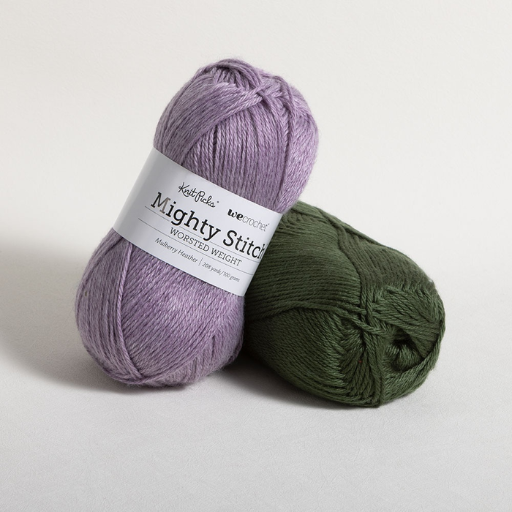
Acrylic yarn is a synthetic and cheaper alternative to natural wool or cotton yarns. Unlike the natural fibers, it is light-weight, strong, moth-resistant, and does not grow mildew, making it an easy option for many projects. Furthermore, acrylic yarn is easier to pay for and clean than many natural fiber yarns because it is machine washable and holds up well to wear. Though it does not breathe, and wick away moisture as well as wool or cotton, which can make it uncomfortable in hotter temperatures. All in all, acrylic yarn is a good, budget friendly option, especially for novices, and those looking to make heavily used items like blankets and scarves.
Acrylic vs Wool: Which is Better for Clothing?
|
Parameter |
Acrylic Yarn |
Wool Yarn |
|---|---|---|
|
Cost |
Generally more affordable |
Usually more expensive |
|
Durability |
Resistant to wear |
Durable but prone to pilling |
|
Maintenance |
Machine washable |
Often requires hand washing |
|
Breathability |
Limited |
Highly breathable |
|
Moisture-Wicking |
Minimal |
Excellent |
|
Thermal Insulation |
Moderate |
Superior |
|
Comfort |
Less soft, can feel synthetic |
Naturally soft and comfortable |
|
Allergy-Friendly |
Nonallergenic |
Can cause reactions for some |
|
Environmental Impact |
Petroleum-based, less sustainable |
Renewable and biodegradable |
|
Use Cases |
High-usage items, beginners |
Premium clothing, cold climates |
Acrylic vs Cotton Yarn: What’s the Difference?
|
Key Point |
Acrylic Yarn |
Cotton Yarn |
|---|---|---|
|
Durability |
Strong and long-lasting |
Durable but can weaken when wet |
|
Weight |
Lightweight |
Heavier compared to acrylic |
|
Elasticity |
Good stretch and recovery |
Limited elasticity |
|
Care Requirements |
Easy to machine wash and dry |
Requires gentle washing, may shrink |
|
Color Vibrancy |
Retains bright colors |
Colors may fade over time |
|
Cost |
Generally inexpensive |
Often more expensive |
|
Texture |
Can feel synthetic or rough |
Smooth and natural |
|
Warmth |
Provides artificial warmth |
Natural insulation, ideal for warmth |
|
Pilling Resistance |
Prone to pilling over time |
Less likely to pill |
|
Water Absorption |
Resists water, quick-drying |
Absorbent, takes time to dry |
|
UV Protection |
Limited UV protection |
Offers natural UV shielding |
|
Eco-Friendliness |
Synthetic, less environmentally friendly |
Renewable, biodegradable material |
|
Suitability for Projects |
Ideal for blankets and outdoor items |
Best for apparel and summer projects |
Can You Knit and Crochet with Acrylic Yarn?
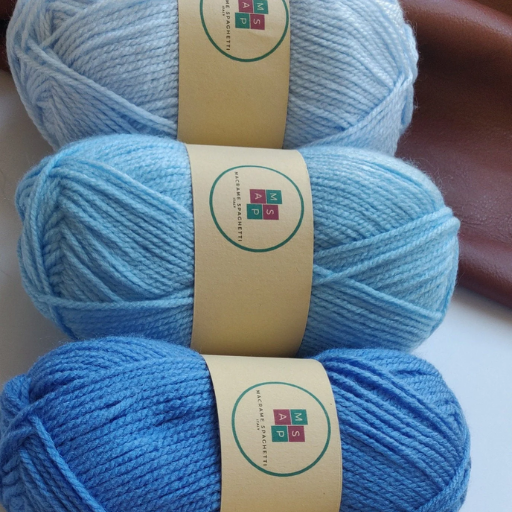
Of course, crochet acrylic yarn is undoubtedly one of the best options for both knitting and crocheting. It is economical, its durability, and the wide variety of colors available make it a go to choice for every artisan irrespective of their skill level. Moreover, acrylic yarn is not heavy, is unrestrictive in maintenance as it is machine washable and does not shrink. These traits make it perfect for crafting everyday objects such as blankets and scarves. Although, you should keep in mind that synthetic yarn will feel less breathable than natural fibers. This is important if the final purpose of your work would impact your comfort.
What Types of Projects are Best for Acrylic Yarn?
Its low cost along with high versatility and durability make acrylic yarn extremely suitable. For items like afghans, throws and especially baby blankets, which are expected to undergo frequent washing and handling, its long-lasting machine washability is a boon. In addition, the ability to easily make brightly colored clothes ensures its use for garments such as sweaters, hats, and scarves where texture needs stability. Its dyeing quality is also remarkable. For novices, yarn aids them in practicing skills like knitting and crocheting because it is very cheap and widely accessible. Moreover, it can be used for large decorative projects like tapestry wall hangings, and even decorative pillowcases due to its lightweight character. However, the lower level of breathability makes it comfortable for some projects. Therefore, when crafting garments with acrylic yarn, ease and comfort should be given paramount consideration.
How to Choose the Right Weight of Acrylic Yarn for Your Project?
When working on a project, one should consider the suitability of yarn weight and consider the texture, level of worsening, and end durability. The knitting and crocheting process along with ease of handling, depend greatly on the thickness of the yarn strands known as yarn weight. Some examples would include lace, fingering, sport, worsted, bulky and super bulky. For delicate, intricate designs, lighter lace or fingering provide the exact precision required. However, medium weights like worsted are relatively softer, making them appropriate for clothing, blankets, and accessories (which need some structure) because of their softness.
Warm and bulky super yarns are ideal for speedy, cuddly projects such as throws, scarves, and winter hats because they are warm, thick, and knit up quickly. The CYC has standardized a measuring system which places yarns on a numeric scale from 0 (lace) to 7 (jumbo). This can help with selection. Also, paying attention to gauge requirements is important because every weight yarn has a specific stitches-per-inch area with certain sized needles or hooks. Considering yarn weight, pattern needs, and practicality will enhance the outcome visually and functionally for the project.
What Should You Consider When Buying Acrylic Yarn?
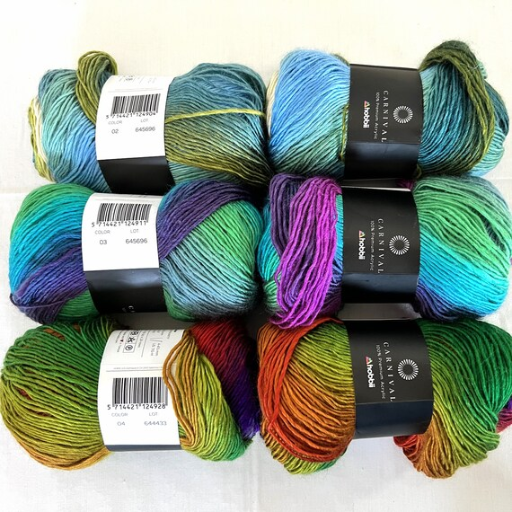
Purchase acrylic yarn while keeping the following key points in mind:
- Intended Use: For intricate projects, select the soft baby yarn type, whereas casual household crafts can use thick and durable yarn.
- Softness and Feel: The yarn’s texture should be ensured to be smooth to the skin for wearables such as clothing to blankets.
- Care Instructions: If you want to create low-maintenance products, machine-washable acrylic yarn is recommended. Most acrylic yarns resist shrinking and fading.
- Budget and Quantity: Though acrylic yarn is relatively inexpensive, make sure you buy enough to maintain consistent color throughout your project using the same dye lot.
Considering these factors will help you choose the type of acrylic yarn that will meet your practical needs while meeting your project objectives.
How to Identify Quality Acrylic Yarn?
In order to evaluate the quality of acrylic yarn products, some aspects need to be considered. First check the yarn’s fiber softness and texture. An acrylic yarn of good quality will be smooth and soft to touch rather than feeling stiff or rough. Also check for pilling, as yarn made from premium acrylic will be durable after years of use and several washes with an acrylic detergent. Premium acrylic will not shed fibers or fuzz as easily as softer materials. Furthermore, the yarn should be consistent in color and vibrant—dying not fading over time is a sign of strong uniform and rich colored acrylic.
The acrylic yarn’s stretch alongside the clarity of stitches are another sign of its quality. Quality acrylic yarns have stretch alongside the ease of handling during crafting, enabling defined stitches at the end product which ensures the correct level of tension is used. Lastly, assess the uniformity of the yarn’s weight throughout the skein; uneven weight can point to poor quality construction. Focusing on the factors allows a confident selection when considering durability and visual appeal integrated in the projects made by textiles.
Reference Sources
-
Comfort Properties of Cotton-Acrylic Blends: A study on cotton-acrylic knitted fabrics highlighted that increasing the acrylic fiber ratio enhances wicking abilities and drying rates, making these blends suitable for activewear and comfort-focused clothing.
-
Environmental and Functional Aspects: Acrylic fibers are valued for their wool-like texture, durability, and resistance to UV light and chemicals. However, their environmental impact, particularly in terms of recyclability and chemical treatments, remains a concern.
-
Recent Advancements in Acrylic Applications: Functionalization techniques, such as antimicrobial treatments and UV protection, have been developed for acrylic fabrics. These advancements improve their utility in clothing while addressing some performance limitations.
Frequently Asked Questions (FAQs)
Q: Is acrylic yarn good for making clothes?
A: Yes, acrylic yarn is a popular choice for making clothes due to its versatility, affordability, and ease of care. Many people enjoy the benefits of knitting or crocheting garments with acrylic yarn.
Q: What are the differences between acrylic yarn and animal fiber yarn?
A: Acrylic yarn is synthetic, while animal fiber yarn, like wool, is made from the fleece of animals. Acrylic tends to be less expensive and easier to care for, making it a preferred option for those with a wool allergy.
Q: Can I use acrylic yarn for baby items?
A: Yes, many knitters and crocheters use acrylic yarn for baby items because it is soft, durable, and easy to wash. Brands like Red Heart and Lion Brand offer acrylic options specifically designed for baby projects.
Q: Does acrylic yarn work well for blankets?
A: Absolutely! Acrylic yarn is often used for blankets as it provides warmth without the weight, and it’s easy to care for, making it ideal for cozy throws and baby blankets.
Q: Is acrylic yarn scratchy to wear?
A: While some acrylic yarns can feel scratchy, many modern acrylic yarns are made to be soft and comfortable against the skin. It’s important to choose high-quality brands if you’re concerned about comfort.
Q: What if I don’t like acrylic yarn?
A: If you don’t like acrylic, you can explore other types of yarn such as cotton or wool. Each type has unique properties and can be used for different projects, depending on your preferences.
Q: How do I care for garments made with acrylic yarn?
A: Acrylic yarn is easy to care for; most items can be machine washed and dried. Always check the label for specific care instructions to ensure your project lasts.
Q: Can I mix acrylic yarn with wool?
A: Yes, mixing acrylic with wool can create a balanced fabric that combines the softness of wool with the durability and ease of care of acrylic. This blend can be perfect for a variety of knitting projects.








